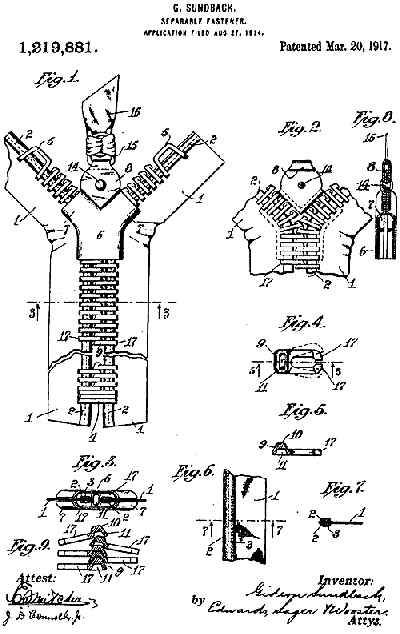What is the zipper’s history? Who invented it? How was it first used?
Let’s go back in time a few centuries to find the answers to these questions. We might even find out something about the zipper we never knew!!
What first looked like a zipper was in 1851, invented by Elias Howe, which applied and received a patent for what was called “a continuous clothing closure”. It had the same function as our modern version.
Elias did not go on to pursue in the marketing of the zipper and went on to invent and market the sewing machine. Thus, he missed out on being recognized as “Father of the Zip”.
A man named Whitcomb Judson came along in 1891, and marketed a device called the “Clasp Closure” that somewhat resembled Howe’s version. And, since he was the first to market the device, he was given the credit of “Inventor of the Zipper”. Sadly, his patent in 1893 didn’t contain the word “zipper”. Whitcomb’s second device that had the name “Clasp Locker” or “C-curity” that was used on shoes, was a complicated hook-eye device. It was on the markets in 1893 and had very little commercial success, as it had the tendency to spring open.
Later, a Swedish man named Gideon Sundback, who had immigrated to Canada, being an electrical engineer, improved Whitcomb’s fastener. Sundback was working at the Universal Fastener Company and the head designer. After his wife died in 1911, Gideon set about to design the modern zipper, as it looks today, and had the design done by Dec. 1913.
Sundback changed the fastening elements from 4 per inch to 10-11 per inch, it also had two rows of teeth that faced each other and pulled into a single piece by its slider, thus increasing the opening for the teeth to be guided by the slider. The patent was issued for what was called the “Separable Fastener” in 1917. It took several months for the modern zipper to find its way to success in the industrial market.
Retailers were more apt to stick with the traditional methods, materials, etc and were slow in purchasing the zipper. When World War I came around, the military and the navy made it mandatory for zippers to be on flying suits and money belts, thus paved the way for the zippers reputation for being durable.
It wasn’t called the “zipper” until the B.F Goodrich Company decided to use Sundback’s fastener on their new style of rubber boots or galoshes. It was then that name “zipper” stuck and has been used since. But it would still take several more years of trying to convince the fashion industry to add it as a closure to garments.
It started out as being popular in children’s clothing as it made it easier for them to dress themselves without much supervision.

